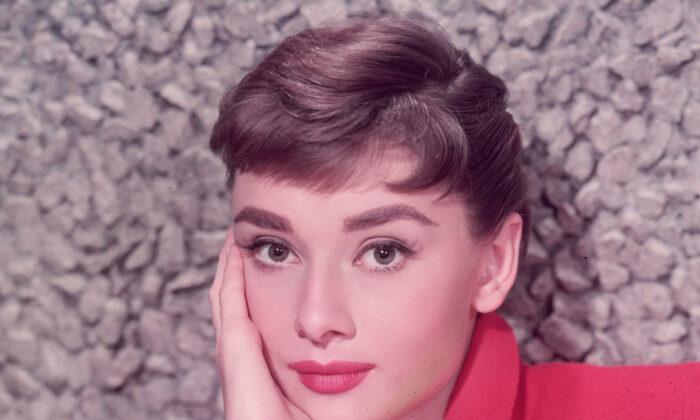In 2006, 29 years after the Hollywood icon’s passing, Audrey Hepburn was voted the most beautiful woman of all time by the British magazine New Woman.
Gregory Peck, her acting partner in her first Hollywood film, said in a Gero von Böhm documentary about her: “I was the happiest person in the world when I had the privilege of being her partner in her first Hollywood film. For six wonderful months, we shot in Rome. That was in 1952. The film is the story of a princess who is incognito in the city to escape her official duties. She meets a journalist, falls in love with him, but in the end, she sacrifices that love and resumes her duties as a future queen. And he returns to his newspaper job. No doubt, the princess has become a queen in real life as well. One of the most popular, talented, intelligent, sensitive, and charming actresses and friends of my life.”
Originally trained as a ballet dancer, the young Hepburn gained experience in various film roles as early as 1948. In 1951, she played the main part in the successful Broadway musical “Gigi” in New York.
She was offered a starring role in “Roman Holiday” as Princess Ann, who takes a day off from her royal responsibilities in Rome. Her first Hollywood production was a great success—Hepburn received an Oscar for it, her first of four.


Hepburn humbly commented on her performance, which launched the beginning of her Hollywood career and made her a sought-after movie star: “They were looking for an unknown face. I was able to fulfill that qualification.”
Growing Up
Hepburn said that the upbringing of her mother, Baroness Ella van Heemstra, had a big influence on her and shaped who she was.“My mother was quite severe and, you know, compared to today’s standards, very Anglo-Saxon, very Dutch. And that also perhaps is what made me what I am, but what you see has a lot to do with what she or she wanted me to be,” she told Barbara Walters in a 1989 interview.
Style
In Hollywood in the 1950s and ‘60s, she starred in films by some of the best directors of the time, and alongside famous male leads such as Humphrey Bogart in “Sabrina,” Henry Fonda in “War and Peace,” Fred Astaire in “Funny Face,” Gary Cooper in “Love in the Afternoon,” Cary Grant in “Charade,” and Sean Connery in “Robin and Marian.”
In many of her films, she was dressed by Hubert de Givenchy. Long before the famous “Breakfast at Tiffany’s,” Givenchy created the world-famous Audrey Hepburn look—elegant, simple, and timeless. Her son Sean Ferrer describes their collaboration this way: “She saw the clothes he created as the beautiful vase that would enhance a simple field flower, whereas he viewed them as the vase that is kept simple so that nothing will detract from the natural beauty of the flower itself. ... [That] elegance had its roots in both their inner values. It came from the right place. It wasn’t a way to be noticed but a way to be humble.“
Hepburn made 25 films in her career; her performances became great successes, and yet she made far fewer films than others.
“I have always cared terribly about my private life,“ she said in an interview with Ivo Niehe. ”Once I had my boys, I wanted to spend a lot of time with them. What I did before my children were born is that I would do two films in the year and then took one year off, because I have never quite understood how you can be a good wife and be gone all the time making a movie.
Commitment
Born in Belgium in 1929 and raised in Holland, she first came into contact with the U.N. Children’s Relief Fund at the end of World War II in bombed-out Arnhem; the agency provided food for the city. Hepburn knew from her own experience what it meant to live as a hungry child amid war and bombs.Time-Tested Beauty Tips
For attractive lips, speak words of kindness.For lovely eyes, seek out the good in people.
For a slim figure, share your food with the hungry.
For beautiful hair, let a child run his fingers through it once a day. For poise, walk with the knowledge you'll never walk alone.
We leave you a tradition with a future.
The tender loving care of human beings will never become obsolete.
People even more than things have to be restored, renewed, revived, reclaimed, and redeemed and redeemed and redeemed.
Never throw out anybody.
Remember, if you ever need a helping hand, you'll find one at the end of your arm. As you grow older, you will discover that you have two hands: one for helping yourself, the other for helping others.
Your “good old days” are still ahead of you. May you have many of them.

